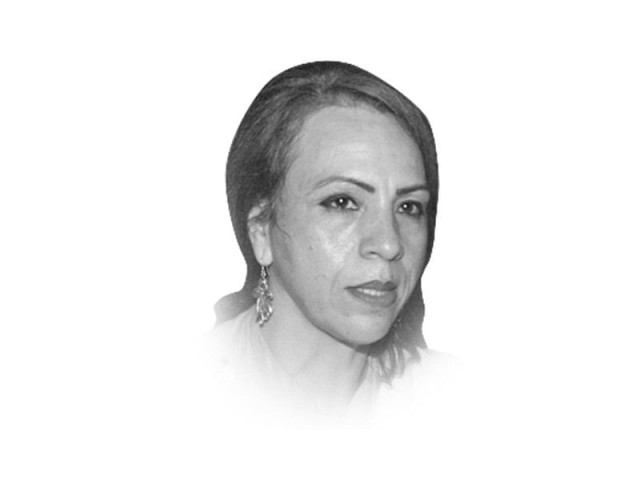Reserved seats for women and the elite’s hold on them
Reserved seats must be filled via direct elections so women on reserved seats have their own constituency, power base.

The writer is director of the Department of Gender Studies at Quaid-i-Azam University in Islamabad
The way reserved seats for women in the legislature are filled is a matter of grave public concern. The indirect modality of election on reserved seats with no prescribed criteria for the eligibility has led to nepotism and the capture of seats for women by the elite. In the previous two National Assemblies, as well as in the present one, the trend in treating seats for women undemocratically by political leadership has not changed. Blood relations, wives and relatives of politicians are nominated on these seats to reward party influentials. Many of these women have no background either in politics or of working in women’s rights movements. This trend reflects not only the dynastic and elitist nature of our politics, but also negates the very spirit of having a gender quota in politics.
In view of the male domination of politics and the structural constraints faced by women in entering the formal arena of politics across cultures, gender quota had been adopted as a global strategy to correct this imbalance. This global commitment is reflected in the human rights bill, the Convention on the Elimination of All Forms of Discrimination against Women, adopted in 1979 by the UN General Assembly. It makes it obligatory for states to take affirmative action to ensure women’s equal participation in politics and public life. Today, over 90 countries in the world have adopted some form of gender quota as a strategy to remove gender discrimination in politics.
However, the quota debate is hotly contested all over the world. Justice and utilitarian arguments are offered to justify quota provisions. The justice argument is based on the principle of democracy. Women constitute nearly half of the world population, contribute to the social and economic life of their countries through their productive and unpaid reproductive labour, therefore, it is their fundamental right to have a voice in their countries’ governance. The utilitarian argument takes the position that women have different experiences, interests and needs from men. They have distinct legal and national priorities due to their caring roles that they have been performing for centuries. It contends that women will bring a distinct perspective and positive values of peace and love to politics.
This assumed commonality of interests amongst women has been challenged by women themselves. It has been argued that women do not have similar common interests. They are divided along the lines of class, ethnicity, rural/urban divide, religion and other social divisions. Therefore, it is important that quota seats represent this divide amongst women fairly. Women from the marginalised sections of society, peasantry, the labour class, religious and ethnic minorities should also be brought into the legislature on reserved seats to represent the interest of their own class/social group.
The majority of women parliamentarians, who came on the reserved seats in the previous two parliaments, belonged to elite backgrounds. However, they did play an active role in parliamentary business. Nonetheless, they are criticised for not taking up issues that directly impact the lives of poor women. Consequently, the majority of women continue to face problems in accessing justice, basic services and equal opportunities.
Reserved seats must be filled through direct elections so that women on reserved seats can have their own constituency and power base. Also, an amendment to the Political Party Act should be introduced on a priority basis that should make it mandatory for political parties to grant gender quota within the party structures and in giving tickets on general seats during elections. Reform in gender quota is the only way to protect the legitimacy and credibility of quota provision and save it from the challenge posed by misogynists.
Published in The Express Tribune, June 8th, 2013.
Like Opinion & Editorial on Facebook, follow @ETOpEd on Twitter to receive all updates on all our daily pieces.

















COMMENTS
Comments are moderated and generally will be posted if they are on-topic and not abusive.
For more information, please see our Comments FAQ